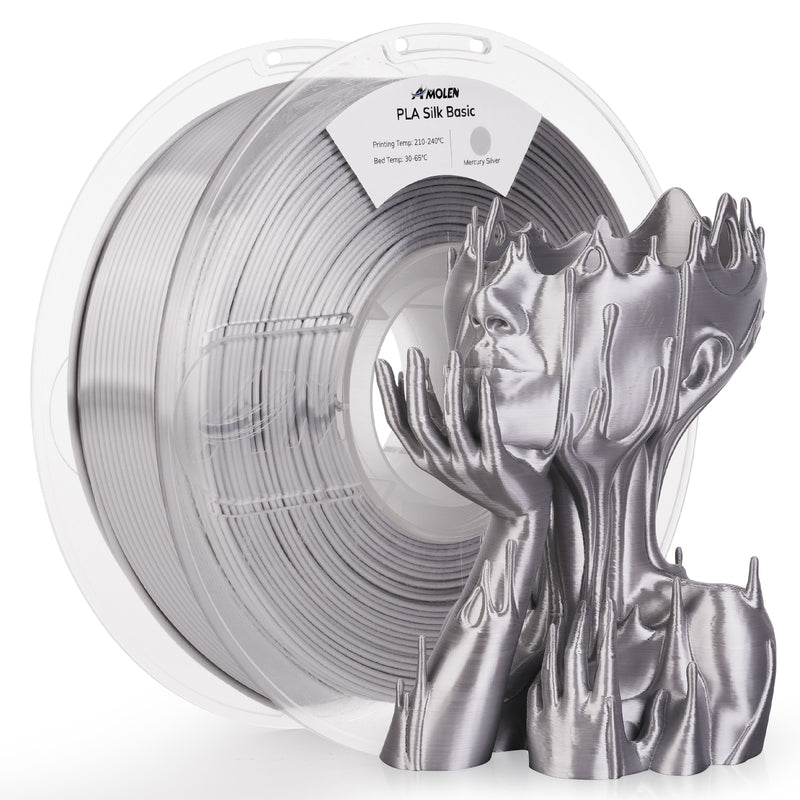Unlock the Secrets of PLA Filament: Discover Its Magic in 3D Printing!
In the vibrant world of 3D printing, one material has emerged as a favorite among enthusiasts and professionals alike: PLA filament. Short for Polylactic Acid, this biodegradable polymer is derived from renewable resources like corn starch and sugarcane, which makes it an eco-friendly choice for printing. As 3D printing continues to revolutionize industries from prototyping to art, understanding PLA filament's properties, uses, and benefits is essential for anyone looking to harness the full potential of this technology. Whether you're a seasoned printer or just starting your journey, this article will dive deep into the magical realm of PLA filament, showcasing why it has become a go-to material in the 3D printing community.

Understanding PLA Filament
PLA filament is a thermoplastic made from the fermentation of plant starch, primarily derived from corn. This unique composition not only makes it a renewable resource but also offers a range of advantages over traditional petroleum-based plastics. The production of PLA involves a series of processes that transform raw plant materials into a filament suitable for 3D printing. This includes processes like extrusion, where the PLA is melted and shaped into strands, ready for use in printers. Its popularity among 3D printing enthusiasts can be attributed to its user-friendly nature, making it ideal for both beginners and experts. I recall a friend of mine who jumped into 3D printing without much experience; he found PLA filament to be particularly forgiving, allowing him to create impressive models with minimal fuss.
Properties of PLA Filament
One of the standout features of PLA filament is its ease of use. It prints at a lower melting temperature, typically around 180-220°C, which means it can be used with most 3D printers without requiring specialized equipment. Additionally, PLA is known for its rigidity and strength, making it suitable for detailed models and prototypes. Another significant property is its biodegradability; under industrial composting conditions, PLA can break down into natural substances, making it an environmentally friendly option. However, it's important to note that PLA is less heat resistant than some other filaments, so it might not be the best choice for items exposed to high temperatures. I once printed a beautiful vase for my home using PLA, but I learned the hard way that placing it near a sunny window caused it to warp slightly. This experience underscored the importance of understanding the material's properties for successful printing.
Uses of PLA Filament in 3D Printing
PLA filament boasts a wide array of applications across various industries. It is particularly popular in prototyping, where designers can create and test models quickly. In educational settings, teachers use PLA to engage students in STEM projects, allowing them to bring their ideas to life through 3D printing. Additionally, artists and hobbyists use PLA filament to create intricate sculptures and functional art pieces, thanks to its vibrant color options and ease of manipulation. For instance, a friend of mine who is an art teacher recently introduced 3D printing into her classroom, and the students were thrilled to see their designs come to life in colorful PLA, fostering creativity and innovation. The versatility of PLA filament truly makes it a favorite in the 3D printing landscape.
Benefits of Using PLA Filament
The benefits of using PLA filament extend beyond its ease of use and versatility. One of the primary advantages is its environmental friendliness; being made from renewable resources and biodegradable, it aligns with the growing push for sustainable practices in manufacturing. Moreover, PLA is widely available in a variety of colors and finishes, allowing creators to choose the perfect aesthetic for their projects. It also has a relatively low odor when printed, making it suitable for indoor use without the need for specialized ventilation systems. These factors make PLA filament an accessible choice for beginners and seasoned professionals alike. Personally, I've found that using PLA has allowed me to experiment more freely, knowing that I am contributing to a greener planet while enjoying the creative process.
Summary of PLA Filament's Impact
In conclusion, PLA filament stands out as a remarkable material in the world of 3D printing. Its unique properties, extensive uses, and numerous benefits make it a favorite among creators across various fields. From prototyping to artistic endeavors, PLA filament offers versatility and ease of use, making it ideal for both beginners and experienced users. As we continue to explore the possibilities of 3D printing, embracing materials like PLA not only enhances our projects but also supports a more sustainable future. So why not dive into the world of PLA filament and start crafting your own creations? The magic of 3D printing awaits!







